It can be tough to determine when exactly a sport becomes extreme. Skating – at its most fundamental level – is nothing more than dudes in kneepads rolling around on a wooden board with wheels. This is a gross oversimplification, of course, but it is interesting to think that the only thing that makes skating an extreme sport is the possibility of getting acquainted with the tarmac on an intimate level. That, and the sick ollies you can pull off.
This sort of problem – the difference between sports of the mild variety and those of the extreme – does not really exist when you are in the water. If you are as terrified of the ocean as some of us, any activity beyond standing knee-high in the tide becomes life-threatening and extreme.
It may surprise you then that there are some people brave enough or crazy enough to take their recreational activities out into the waves.
It is easy to assume that these people are all the same: reckless, insane, and utterly courageous. But look a little closer and you will find that there are plenty of differences between them.
In this article, we are going to examine the differences between two of the most popular methods of tempting Davy Jones’ Locker: bodyboarding and surfing.
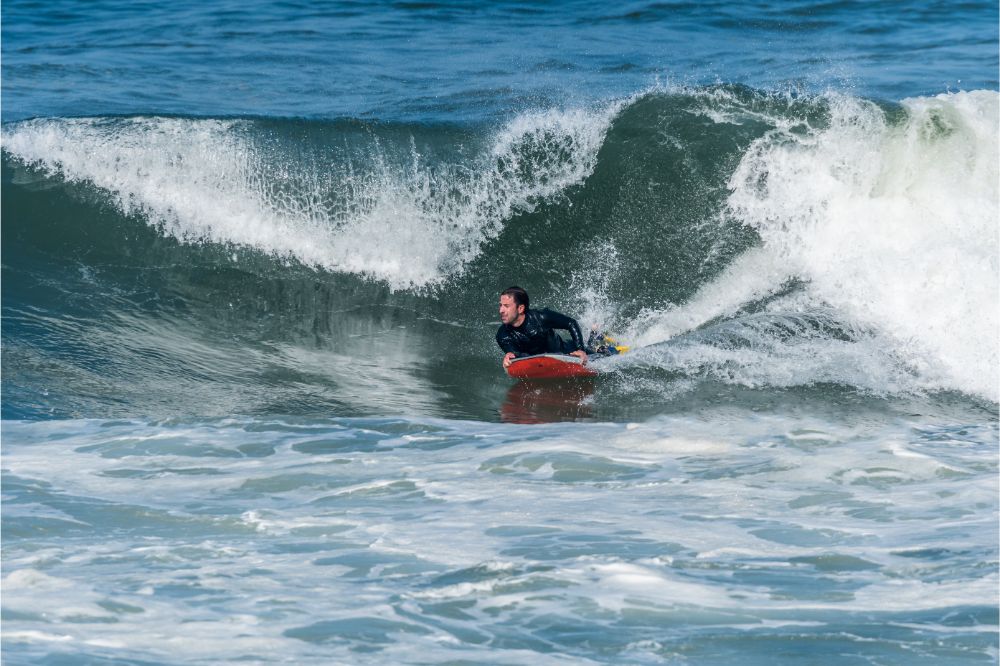
What is Bodyboarding?
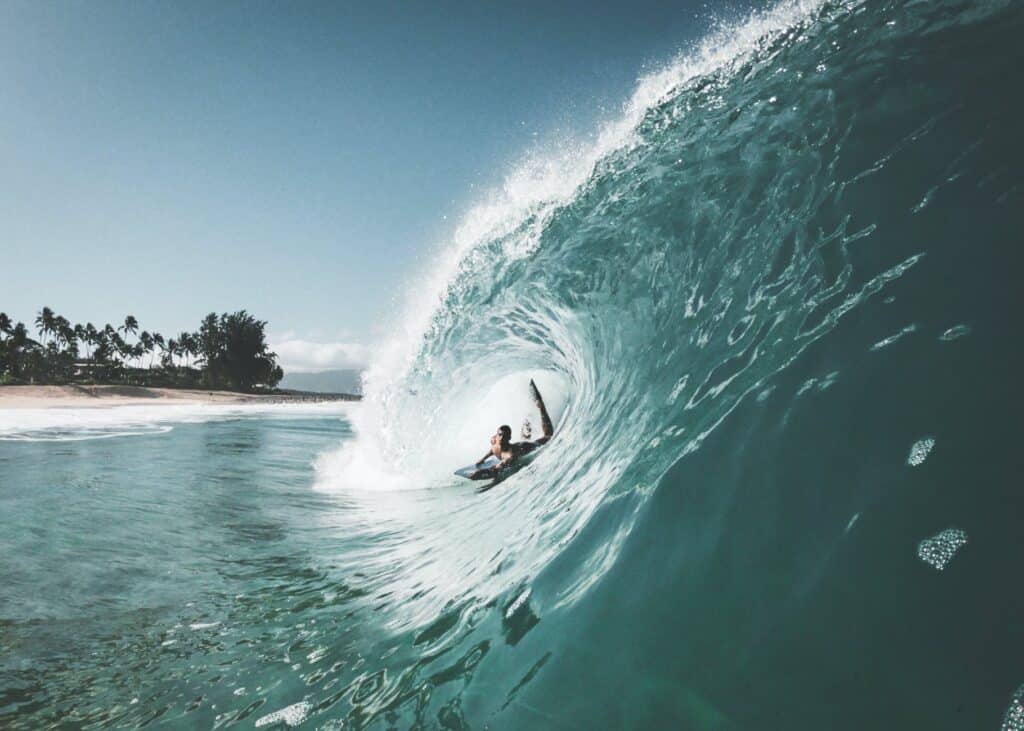
Bodyboarding is a form of a watersport in which the participant rides the crest, face, and curl of a wave in a prone position on a small Board. A more popular name for this particular activity is boogie boarding.
The bodyboard itself is typically a fairly small, rectangular piece of hydrodynamic foam sized to accommodate the torso and some of the upper legs. You may think that that is a pretty small barrier between you and a burial at sea – and you would be right.
Despite this, bodyboarding is one of the most popular watersports today, willingly participated in by children, teens, and even some adults. And there are many reasons why they do this: Bodyboarding is not only great fun, but it is easy to learn and a great exercise for body and soul.
Despite the contemporary nature of the sport, its origins can be found in ancient Polynesia, where the indigenous peoples would ride waves in an almost identical fashion to how people bodyboard today. In fact, Tom Morey incorporated the shape and dimensions of the Polynesian paipo board into the boogie board in 1971.
What is Surfing?
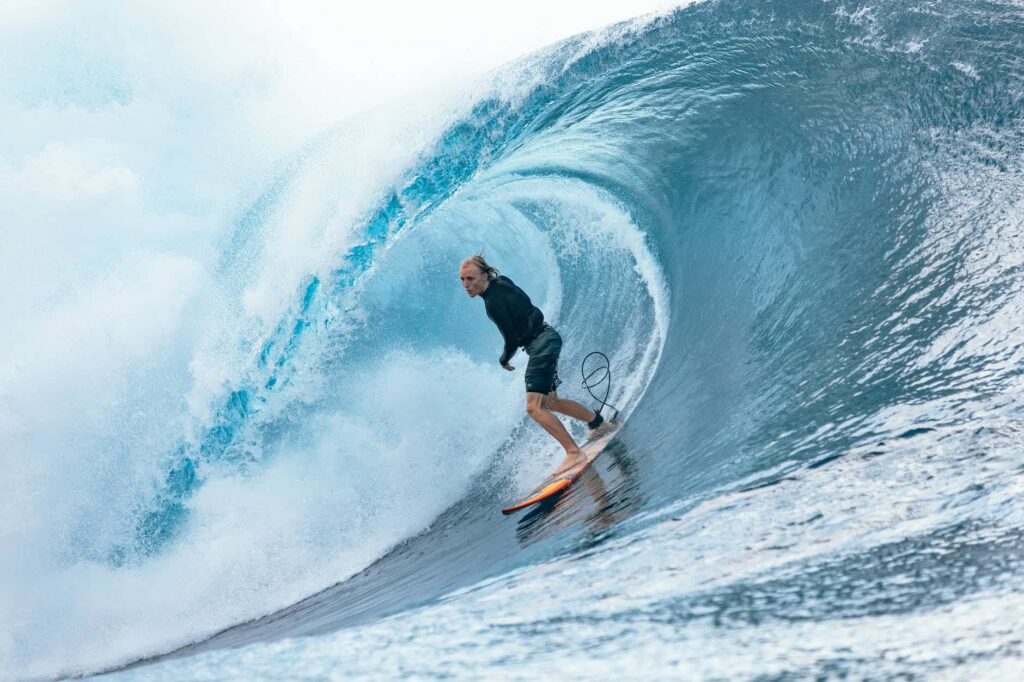
Much like bodyboarding, surfing is an extreme watersport in which the surfer rides the face of a wave as it carries them to shore via any hydrodynamic board. While doing this, the surfer rides the wave in a standing position. In this way, bodyboarding is in fact a very particular form of surfing.
Generally, however – thanks to popular culture’s depiction of the sport – surfing usually refers to the method of riding the board while standing up, which has cleverly been labeled as “stand-up surfing.”
Do not let your first impressions get the better of you though. There are many different forms of surfing that incorporate a variety of different boards and stances. In some cases, the board is completely optional which – to some people – is the purest form of surfing.
For the purposes of this article, however, we are going to examine the differences between bodyboarding and stand-up surfing, which is possibly the most popular and instantly recognizable variation of the sport.
The Differences Between Bodyboarding and Surfing
All bodyboarders are surfers, but not all surfers are bodyboarders.
What is it – exactly – that separates these two groups of insane individuals?
Well, there are a few key differences between the two sports, all of which have led to something of a rivalry between their participants. We cannot say which of these is the better method of endangering your life out in the open ocean, but we can let you in on the key aspects which make up these two watersports.
The Method
We have already discussed this particular aspect of both activities, but we will briefly restate it here.
Bodyboarders ride the waves in a prone position, chest to the board, hands clutching for dear life, feet kicking behind them. Surfers on the other hand, generally approach the waves in a prone position, then stand atop their board to ride them.
Although both forms of surfing entail a certain degree of danger, bodyboarding is generally believed to be the safer one because of the prone position one assumes.
Difficulty
This factor is a little tougher to quantify. Different people will have different experiences with both bodyboarding and surfing, and encounter various challenges unique to them which will affect how they view the difficulty of the activity.
For the purposes of this article, however, we are going to go ahead and say that at a glance, surfing is more difficult than bodyboarding.
But why is Bodyboarding easier to learn than surfing?
This is mostly due to the way in which one rides the waves – bodyboarders have far more stability and control thanks to their prone position and their ability to hold onto the board. In contrast, surfers – especially new surfers – may find themselves frequently falling off their board.
You may feel inclined to try out surfing, but as a beginner, we would recommend trying your hand at bodyboarding first if for nothing else than to get used to the waves (otherwise Stand Up Paddling is also a form of Surfing which is easy to learn).
Type of Board
The last and most obvious difference between the two sports is the type of boards they use. Put simply, surfers use surfboards and bodyboarders use bodyboards (or boogie boards).
Surfboards are typically long and narrow, which allows surfers to lie down with their entire body on the board with a little space left to spare. Surfers need to lie down as they paddle out to meet larger waves.
Bodyboards in comparison are small and squat, with only enough space for the bodyboarder’s torso and a little extra room for their upper legs. These boards are still pretty stable, and far more portable than surfboards.
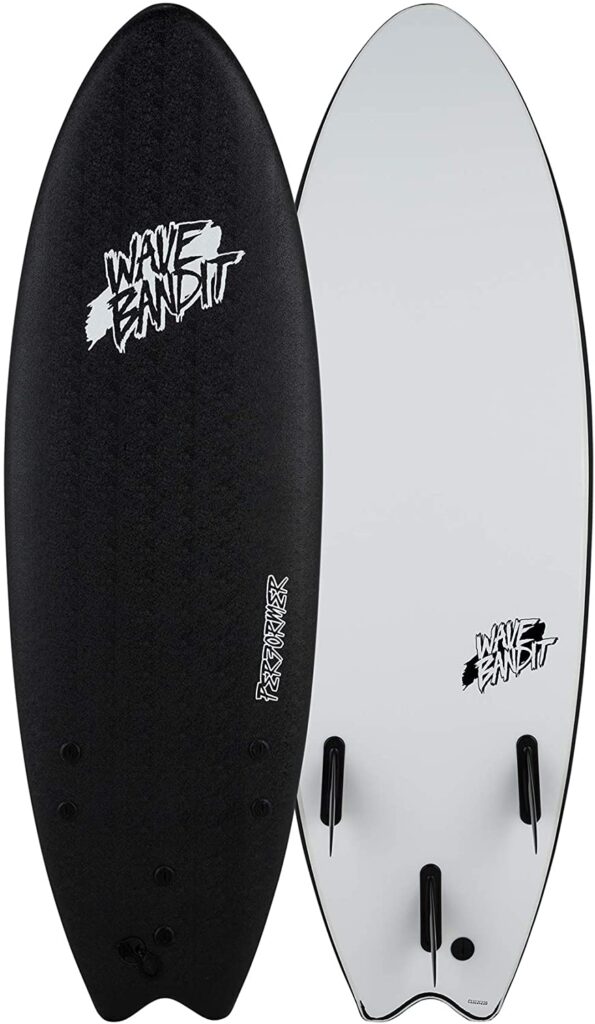
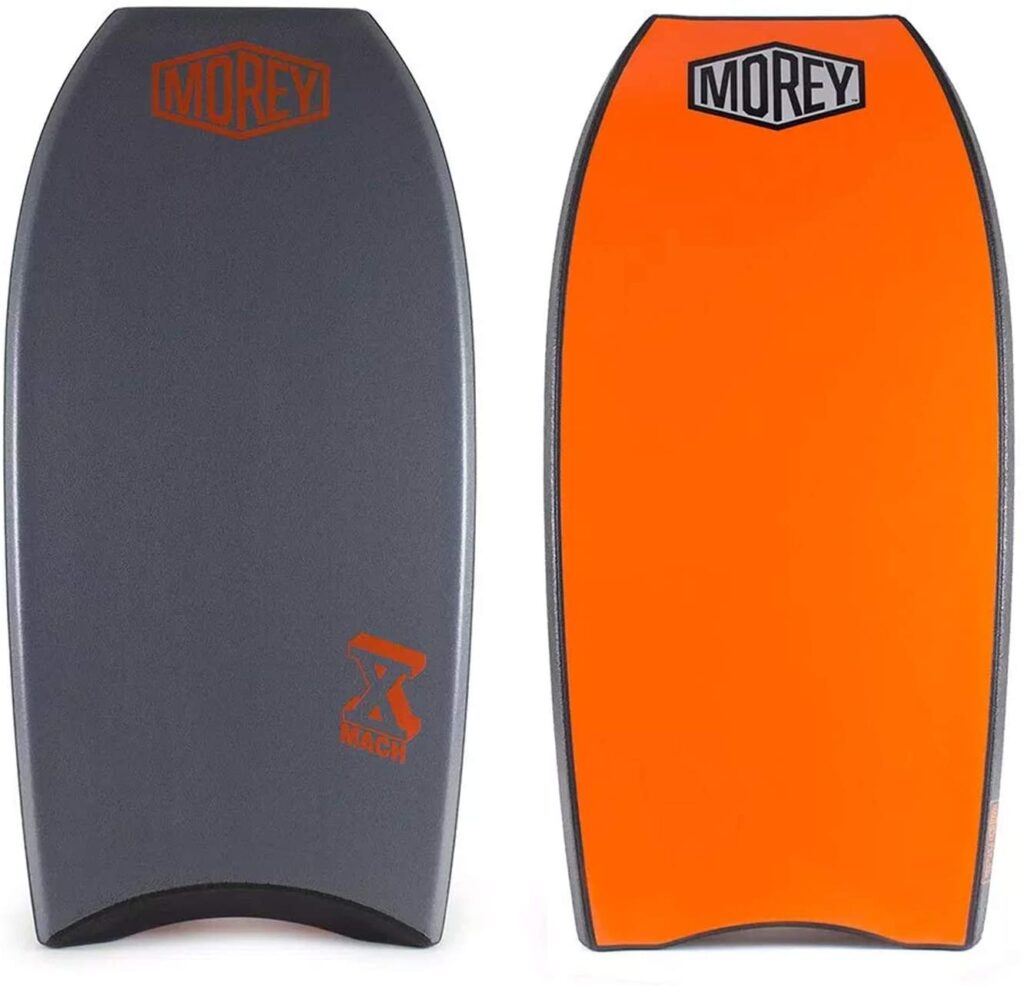
Conclusion on Bodyboarding vs Surfing
There is no doubt that surfers and bodyboarders both enjoy a fair bit of danger and thrills, but bodyboarding is generally considered to be the safer and easier to learn of the two. When it comes down to it, however, it does not matter what you do so long as you do it well and have fun – try it, we’ll promise you’ll end up completely stoked!
Where to find more Information about Bodyboarding
On coolwatersports.com you can find much more helpful information to get started with Bodyboarding. So if you are interested in learning this exciting sport, check out the following articles!






